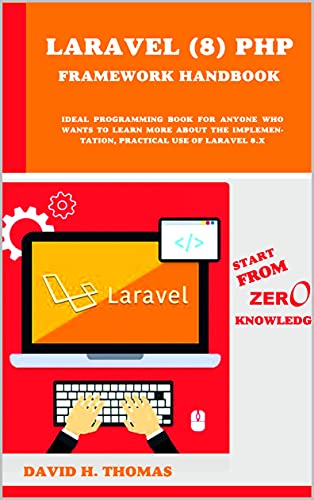Download this PDF book: Lectures on Quantum Mechanics: With Problems, Exercises and Solutions (Graduate Texts in Physics) by Jean-Louis Basdevant
Beautifully illustrated and engagingly written, Twelve Lectures in Quantum Mechanics presents theoretical physics with a breathtaking array of examples and anecdotes. Basdevant’s style is clear and stimulating, in the manner of a brisk lecture that can be followed with ease and enjoyment.
Here is a sample of the book’s style, from the opening of Chapter 1: "If one were to ask a passer-by to quote a great formula of physics, chances are that the answer would be ‘E = mc2’…. There is no way around it: all physics is quantum, from elementary particles, to stellar physics and the Big Bang, not to mention semiconductors and solar cells.
From the Back Cover
The new edition of this remarkable textbook offers the reader a conceptually strong introduction to quantum mechanics, but goes beyond this to present a fascinating tour of modern theoretical physics.
Beautifully illustrated and engagingly written, it starts with a brief overview of diverse topics across physics including nanotechnology, materials science, and cosmology. It provides new chapters on astrophysics, quantum information and the photon. Each chapter provides a set of exercises, questions, a problem and solutions.
The core of the book covers both established and emerging aspects of quantum mechanics. A concise introduction to traditional quantum mechanics covers the Schrödinger equation, Hilbert space, photon physics, the algebra of observables, hydrogen atom, spin and Pauli principle.
Modern features of the field are presented with Bell's inequality by exploring systems of entangled states, that have generated the 'second quantum revolution' of systems that communicate instantly at a distance, and the birth of quantum information: cryptography, teleportation and quantum computers.
Quantum mechanics was born during the miraculous decade at the turn of the 20th century, when Röntgen’s 1895 discovery of X-rays in the Crookes tube sparked public enthusiasm, and where the following unexpected discoveries that have been made that have transformed the way we see the universe.
In 1896, by reading Röntgen’s paper, Poincaré and Becquerel discovered radioactivity, assisted by Pierre and Marie Curie. In October 1896, Zeeman, then, in 1897 J. J. Thomson, discovered the electron. The month of December 1900 saw Max Planck generate the fundamental constant of quantum physics, followed by Einstein’s contribution that includes what we now call the photon.
In 1906 Rutherford gave birth to nuclear physics. The range and extent of the quantum revolution that led to an explanation of the structure and dynamics of atomic and molecular constructions were unexpected. So is the world of our daily life: technology, Medicine, Information, automated micro-systems.
Since 1950, with the quantum theory of fields, a deeper and deeper breakthrough towards the world of elementary particles, the infinitely small. The components of matter, quarks and leptons, the structure of fundamental interactions. The experimental discovery of the Higgs Boson at CERN in 2012, crowned by the 2013 Nobel Prize, and the 2015 Nobel Prize awarded for highlighting a non-zero mass of neutrinos in 2000, have been marked major progresses.
More recently, the Nobel Prize in Physics 2022 was awarded jointly to Alain Aspect, John F. Clauser and Anton Zeilinger “for experiments with entangled photons, establishing the violation of Bell inequalities and pioneering quantum information science” which constitutes a most extraordinary phase in the evolution of physics.
On the scale of the infinitely large, that of astrophysics and cosmology, where Einstein’s General Relativity must be invoked, the number of advances is also great. We penetrate the cosmos, the functioning of the stars, their evolution, the explosion of supernovae, the unfolding of the Big Bang.
It gives a simple explanation of the existence of truly quantum stable stars such as white dwarfs or neutron stars in which the gravitational contraction is counteracted by the pressure due to Pauli’s exclusion principle! Only one current question: during a first lap of 10−43 s after the beginning of the Big Bang, we don’t know what the physics was
Contents:
1 Perception and Imagination
2 Quantum Phenomena
3 Wave Function, Schrödinger Equation
4 Physical Quantities and Measurement
5 Energy, Quantization and Quantum Tunneling
6 Principles of Quantum Mechanics
7 Two-State Systems, Matrix Mechanics
8 The Photon
9 The Algebra of Observables
10 Approximation Methods
11 Angular Momentum
12 The Hydrogen Atom
13 Spin 1/2
14 Fine and Hyperfine Structure of Spectral Lines
15 Identical Particles, The Pauli Principle
16 The Evolution of Systems
17 Entangled States. The Way of Paradoxes
18 Quantum Information and the Fruits of Entanglement
19 Solutions to the Exercises19 Solutions to the Exercises
About the Author
Jean-Louis Basdevant, graduated from Ecole Normale Supérieure (1958-1963), PhD at Strasbourg University (1967). Assistant researcher up to Director of Research at the CNRS (1963-2007), CERN (1970-1972). Professor at the Ecole Polytechnique (1969-2004). Nominated Honorary Professor (2004).
About the book:
Publisher : Springer; 3rd ed. 2023 edition (February 4, 2023)
Language : English
Pages : 499
File : PDF, 8MB
Free Download the Book: Lectures on Quantum Mechanics: With Problems, Exercises and Solutions (Graduate Texts in Physics) by Jean-Louis Basdevant
PS: Share the link with your friends
If the Download link is not working, kindly drop a comment below, so we'll update the download link for you.
Happy downloading!








